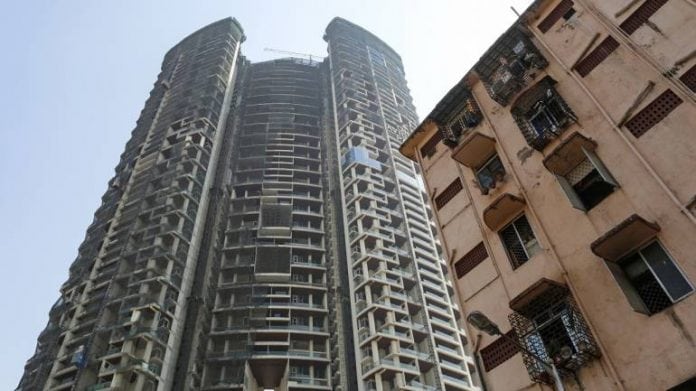Considering that value of houses in these cities are far lower than in the metros, large-sized units may witness some amount of demand from the home buyers belonging to the middle income group
The government’s decision to approve a 33 percent increase in carpet area of houses eligible for interest subsidy under its affordable housing scheme is expected to boost demand for larger homes in tier-2 and tier-3 cities.
The move will also help bolster sales as almost 90 percent of unsold residential inventory available in the market right now may fall under the ambit of the Pradhan Mantri Awas Yojana-Urban, realty experts said.
Tier-2 and tier-3 cities such as Indore, Jaipur, Kochi, and Coimbatore, among others, may witness some amount of traction due to the changes in eligibility criteria.
Considering that value of houses in these cities are far lower than in the metros, large-sized units may witness some amount of demand from the home buyers belonging to the middle income group, experts said.
The Ministry of Housing and Urban Affairs has increased the prescribed carpet area limits for availing interest subsidy under the Pradhan Mantri Awas Yojana (Urban) to 160 sq m or 1,722 sq ft for MIG-I, and to 200 sq m or 2,153 sq ft for MIG-II.
For the MIG I category, which consists of individuals with an annual income of Rs 6-12 lakh, an interest subsidy of 4 percent is provided on a loan of up to Rs 9 lakh.
For the MIG II category, which is made up of individuals with an annual income of Rs 12-18 lakh, an interest subsidy of 3 percent is given on a loan of up to Rs 12 lakh.
The new rules will be effective from January 1, 2017, the date on which the scheme became operational. What this means is that first-time home buyers who purchased properties after that date can avail of the subsidy.
The decision comes shortly after the RBI decided to revise the limits for a loan to qualify as a priority sector loan.
“…real estate developers have been trying to reduce the product mismatch and offer right-sized and right-priced units. However, existing unsold units in smaller cities, where capital values are low, may witness some traction now with this rise in eligibility criteria for MIG homebuyers,” said Anuj Puri, Chairman – ANAROCK Property Consultants.
While the maximum traction in the CLSS scheme is for houses that cost up to Rs 25 lakh, this decision will incentivise middle-income buyers to close transactions, and unsold stock may witness some traction, Puri said.
Aashish Agarwal, Senior Director (Head Consulting), Colliers International India, concurred with Puri’s view that a majority of the demand for this scheme is expected to come from tier-2 and tier-3 towns.
The government’s Smart Cities initiative is expected to see investments in excess of Rs 2 lakh crore across 99 cities, impacting close to 10 crore people.
As improved connectivity and infrastructural development give a boost to economic activity in these places, demand for houses is expected to increase in the categories covered under the revised CLSS eligibility limits.
The lower interest outflow could also encourage people living in rented apartments to consider buying their own home and provide much needed sales momentum to builders for a wider range of their products.
Will it help reduce unsold inventory?
The move may not help in substantially reducing old inventory, but may result in some unsold properties getting sold, experts said.
“There may not be a significant inventory that fits in the home buying criteria for MIG buyers, considering that there is an upper cap of Rs 18 lakh annual household income to avail subsidies. Nonetheless, it is certainly a positive move and may help clear off some unsold inventory,” said Puri.
According to Pankaj Kapoor, Managing Director at Liases Foras Real Estate Rating & Research, all peripheral urban areas of metros will benefit from this scheme.
“If the sales grow, 50 months of inventory, which is a major issue, should come down to 15 months or 20 months, making the market more efficient. It is not the 11 lakh unsold inventory that is the concern, it is annual sales of only 3 lakh units that is the major issue,” Kapoor said.
“The moment your denominator increases, your unsold stock does not look heavy. It looks heavy today because sales are slow and the government through this measure aims to boost sales. As many as 1.8 crore houses are required under the Housing for All initiative, for which the supply too needs to grow 18 times. In order to achieve that, it is important to boost sales rather than reduce inventory,” he added.
Will 500 sq ft houses compete with 2,000 sq ft units in these towns?
Home buyers falling in the MIG –I and MIG-II categories would miss out on interest subsidy if they purchased apartments larger than the previous eligibility cap of 120 and 150 sq m, respectively.
Living in apartments or houses larger than that size is not an uncommon phenomenon in tier-2 and tier-3 cities, given the product configurations on offer in some of these markets.
An affordable 500-600 sq ft apartment and a 1,500-2,000 sq ft apartment in a lower-priced market, actually cater to different segments.
For example, for a person with an annual salary of Rs 18 lakh and eligibility for 75 percent mortgage for 5 times that amount, the property value (net of transaction costs and taxes) eligible for subsidy would be in excess of Rs 1 crore.
Most of affordable housing in metros is coming up in areas where the demand does not exist and there is hardly any infrastructure.
“Earlier cities were expanding because prices were expanding but most of these expanded geographies lack the infrastructure and the social fabric. Despite new supply of affordable housing, the areas are not livable and therefore demand is low. Now good supply in peripheral towns will get traction. Location again will be paramount,” Kapoor said.


